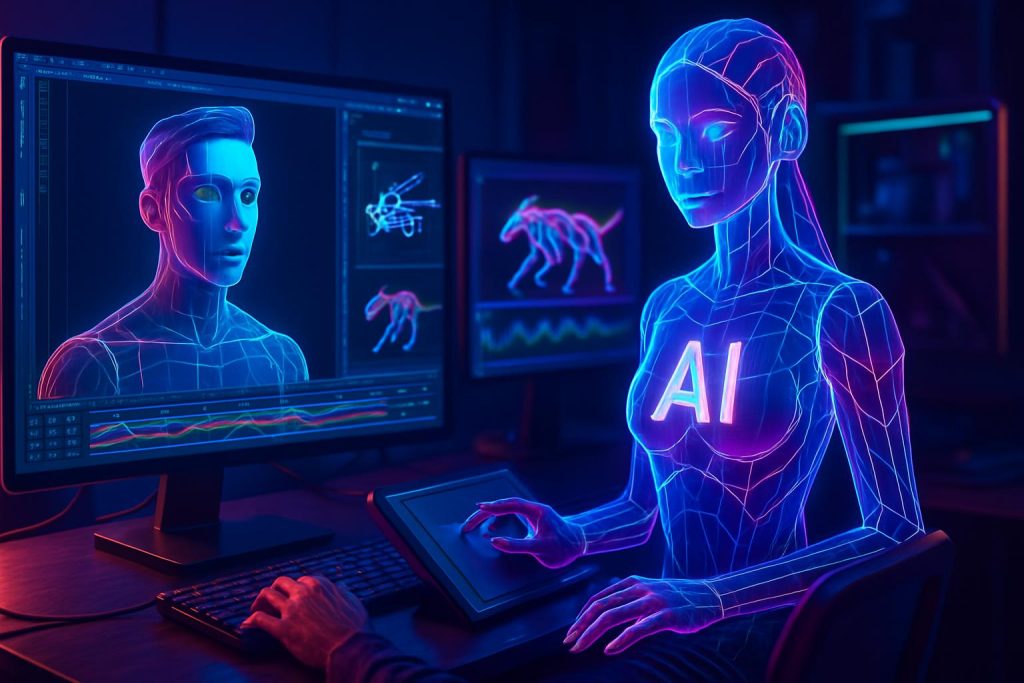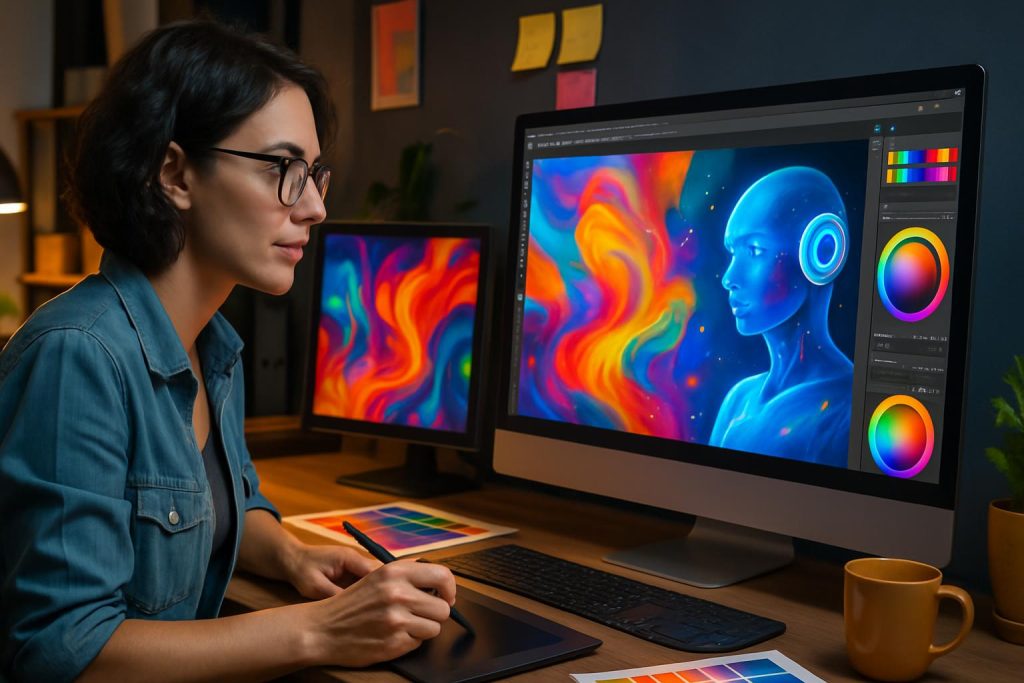In the immersive world of 3D modeling and animation, creativity knows no bounds. From breathtaking visual effects in blockbuster films to hyper-realistic characters in video games and detailed product visualizations for e-commerce, 3D content is increasingly central to how we experience digital media. However, the creation of such content has traditionally been a highly specialized and labor-intensive process, demanding extensive technical skills, powerful software, and countless hours of meticulous work. Artists and studios often face the daunting challenge of translating complex visions into tangible 3D assets, a process fraught with repetitive tasks, intricate rigging, and time-consuming rendering. This operational burden can stifle artistic exploration, delay production schedules, and limit the scope of creative projects.
But what if there was a way to accelerate this intricate process, to democratize 3D content creation, and to bring even the most ambitious visions to life with unprecedented speed and efficiency? This is precisely where AI for 3D modeling & animation emerges as a transformative force. AI-powered tools are not here to replace the skilled 3D artist; rather, they serve as intelligent accelerators, augmenting an artist’s capabilities and streamlining workflows in ways previously unimaginable. By automating repetitive tasks, generating complex geometries, assisting with texturing, and even simplifying animation, AI frees up 3D professionals to focus on higher-level artistic direction, conceptualization, and the nuanced storytelling that only a human can provide. This shift transforms the 3D creation process from a labor-intensive endeavor into a more fluid, intuitive, and creatively liberating experience.
This article delves into how artificial intelligence is reshaping the landscape of 3D modeling and animation, offering innovative solutions to common pain points and opening doors to new possibilities for creating truly immersive and dynamic digital worlds. Building on the foundational concepts discussed in Revolutionizing creative workflows with AI design tools, we will highlight how AI tools specifically enhance the creation of 3D models and animations. You’ll learn about:
- The specific challenges 3D artists and animators face that AI can effectively address.
- Key areas where AI tools are making a significant impact in 3D modeling and animation workflows.
- How AI facilitates faster asset creation, rigging, and animation for improved digital content.
- The benefits of integrating AI into your 3D workflow for enhanced artistic output and reduced production time.
Ready to discover how AI can elevate your 3D modeling and animation practice, making it more efficient, innovative, and visually stunning? Let’s explore the transformative power of AI in bringing visions to life.
The intricate world of 3D: challenges AI can simplify
3D artists and animators navigate a complex ecosystem of technical demands, artistic vision, and production deadlines. The pursuit of realistic
models, fluid animations, and compelling visual narratives can be incredibly demanding, especially when dealing with:
•Time-consuming modeling: Creating detailed 3D models from scratch, especially organic shapes or complex structures, requires immense precision and time.
•Rigging and skinning: Preparing 3D models for animation by creating skeletal structures and defining how the mesh deforms can be a highly technical and tedious process.
•Texturing and shading: Applying realistic textures and materials to 3D models to achieve desired visual properties often involves intricate manual work.
•Keyframe animation: Manually setting keyframes for complex character movements or object transformations can be incredibly time-consuming and require a deep understanding of motion principles.
•Rendering times: Generating high-quality final images or animation sequences can take hours or even days, tying up valuable computing resources.
These challenges not only consume valuable time but can also lead to project delays, increased production costs, and, ultimately, creative compromises. AI offers a compelling solution by automating these pain points, allowing artists to focus on the strategic and artistic aspects of their craft.
AI solutions for a smarter 3D modeling & animation workflow
AI tools are fundamentally changing how 3D artists and animators approach their work, offering intelligent assistance across various stages of the creation process. Here’s how AI is making a significant impact:
Automated 3D model generation
One of the most revolutionary applications of AI in 3D is its ability to generate 3D models from various inputs. AI can create complex geometries from simple text descriptions, 2D images, or even hand-drawn sketches. This significantly accelerates the initial modeling phase, allowing artists to quickly generate base meshes or explore different design variations without starting from scratch. This capability is particularly useful for rapid prototyping, concept art, and generating environmental assets.
For example, Meshy AI offers powerful assistance in creating stunning 3D models, significantly reducing the manual effort involved in complex modeling tasks. By leveraging AI, Meshy can generate high-quality 3D assets from text or images, making the creation process faster and more accessible. To Create stunning 3D models with Meshy AI assistance, explore its capabilities in transforming your modeling workflow and bringing your ideas to life with unprecedented speed.
Intelligent rigging and animation assistance
Rigging and animation are often considered the most technically challenging aspects of 3D production. AI is now simplifying these processes by automating tasks like character rigging, motion capture data processing, and even generating basic animations. AI-powered tools can automatically create skeletal structures, apply skinning, and even generate realistic movements based on simple inputs or reference videos. This frees animators from tedious manual work, allowing them to focus on refining performances and adding artistic nuances.
Similarly, Sloyd AI empowers users to animate with ease, leveraging AI to streamline the animation process and make it more intuitive, even for those new to 3D animation. Sloyd AI can assist with character posing, motion generation, and even procedural animation, allowing artists to create dynamic scenes with less effort. To Animate with ease: harness Sloyd AI power, discover how AI can simplify complex animation tasks and unlock new creative possibilities in your 3D projects.
Enhanced texturing and material creation
AI is also making significant strides in texturing and material creation. AI-powered tools can generate realistic textures from simple descriptions, upscale low-resolution textures, and even transfer textures between different models. This accelerates the process of adding visual detail and realism to 3D assets, ensuring a consistent and high-quality look across projects.
Optimized rendering and scene optimization
While not directly creating 3D content, AI is also being used to optimize the rendering process and improve scene performance. AI algorithms can intelligently identify and optimize complex scenes, reducing rendering times and improving overall efficiency. This allows artists to iterate faster and produce high-quality renders in a fraction of the time.
Integrating AI into your 3D modeling & animation workflow
Embracing AI in 3D modeling and animation is not about diminishing artistic skill; it’s about augmenting it. The most effective approach involves integrating AI tools strategically into your existing workflow, allowing them to handle the repetitive and data-intensive tasks while you focus on higher-level artistic direction, creative problem-solving, and the nuanced storytelling that defines compelling 3D content. Here’s how to effectively weave AI into your 3D creation process:
1.Automate Base Mesh Creation: Use AI model generation tools to quickly create initial 3D shapes from concepts or sketches. This provides a strong foundation for further artistic refinement.
2.Streamline Rigging and Animation: Leverage AI-powered rigging tools to automate the creation of skeletal structures, and use AI animation assistance for generating basic movements or cleaning up motion capture data.
3.Enhance Texturing and Materials: Employ AI tools to generate realistic textures, upscale existing assets, or apply materials with intelligent assistance, speeding up the visual development process.
4.Accelerate Iteration: With AI handling repetitive tasks, you can rapidly iterate on design concepts, test different animations, and explore various visual styles in a fraction of the time.
5.Focus on Artistic Refinement: Dedicate more time to sculpting intricate details, perfecting character performances, and crafting compelling visual narratives that only a human artist can achieve.
6.Stay Updated and Experiment: The field of AI in 3D is evolving rapidly. Continuously research new tools, features, and techniques, and experiment with different AI solutions to find what best suits your specific artistic needs and production pipeline.
By strategically integrating AI, 3D artists and animators can transform their workflow, moving from a reactive, task-oriented approach to a more proactive, creatively driven one. This allows for greater experimentation, faster delivery, and ultimately, more impactful 3D content.
The future of 3D creation is intelligent and boundless
The integration of AI into 3D modeling and animation signifies a powerful shift towards a more intelligent, efficient, and creatively boundless ecosystem. AI tools are not merely automation engines; they are intelligent assistants that empower artists to push creative boundaries, explore new aesthetics, and deliver exceptional 3D content with greater speed and precision. By offloading the mundane and repetitive, AI allows 3D artists and animators to dedicate their energy to the strategic, conceptual, and emotionally resonant aspects of their work.
This symbiotic relationship between human creativity and artificial intelligence is paving the way for a future where 3D content creation is more accessible, more efficient, and more creatively fulfilling than ever before. The true power lies in harnessing AI to amplify human ingenuity, ensuring that the art of 3D modeling and animation continues to evolve and inspire.



